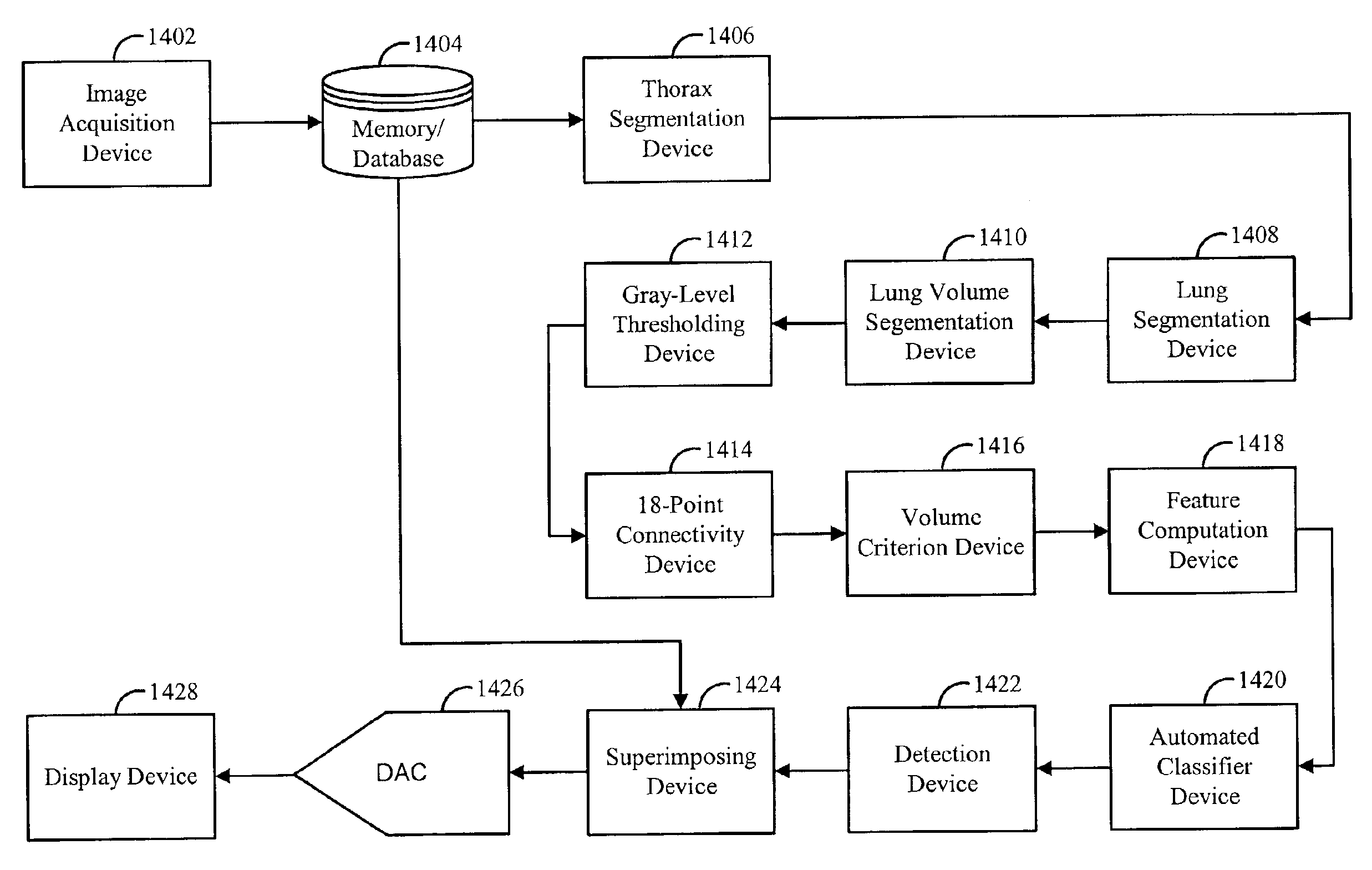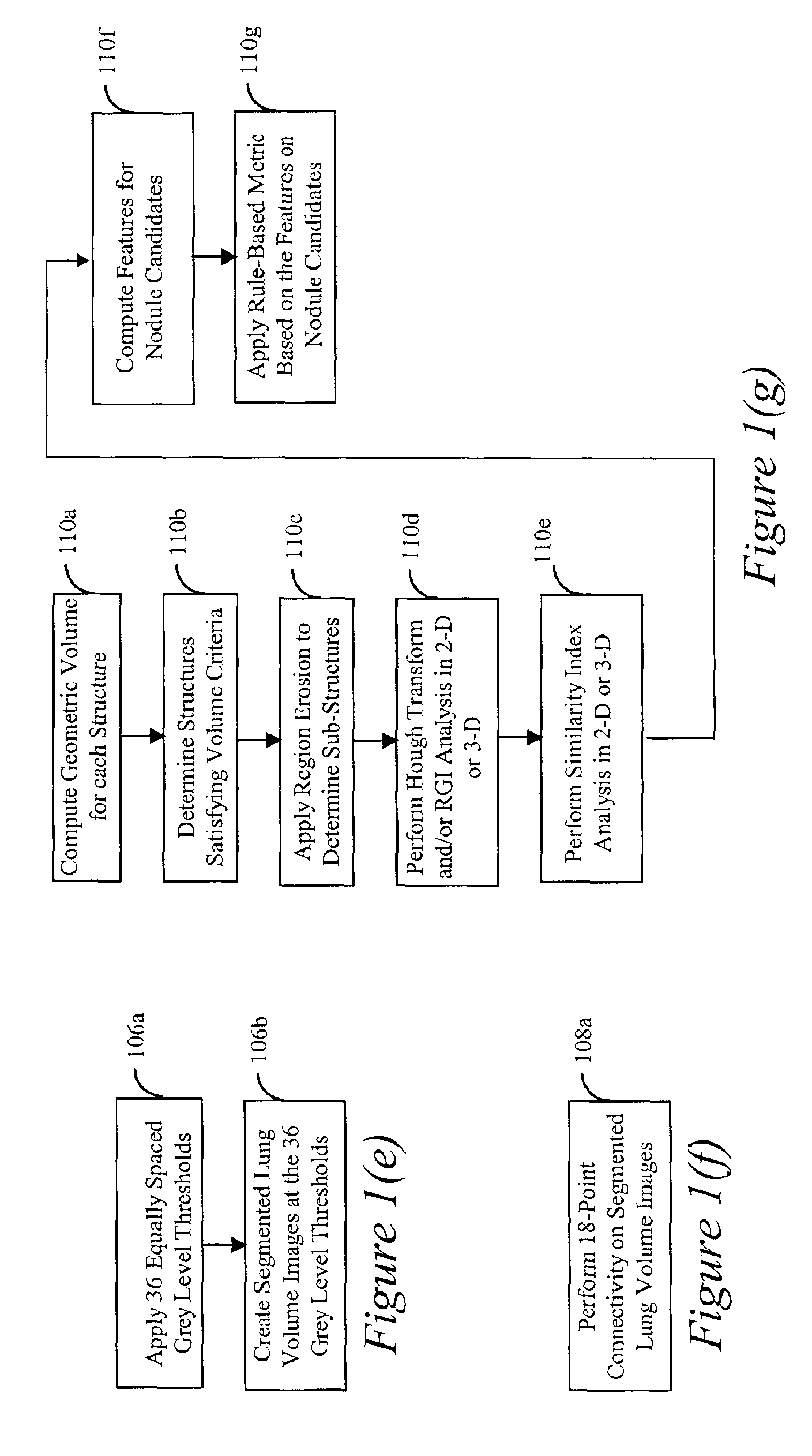Method, system and computer readable medium for the two-dimensional and three-dimensional detection of lesions in computed tomography scans
a computed tomography and two-dimensional imaging technology, applied in tomography, image enhancement, instruments, etc., can solve the problems of fatigue or distraction, confusion in the identification of small lung nodules, and the prominence of blood vessels in ct images, so as to facilitate earlier diagnosis of lung cancer
- Summary
- Abstract
- Description
- Claims
- Application Information
AI Technical Summary
Benefits of technology
Problems solved by technology
Method used
Image
Examples
Embodiment Construction
[0049]Referring now to the drawings, wherein like reference numerals designate identical or corresponding parts throughout the several views, and more particularly to FIGS. 1(a) and 1(b) thereof, there is illustrated a top-level block diagram of an automated method for the detection of lung nodules in thoracic CT scans according to the present invention, as is further discussed.
[0050]The overall scheme according to the present invention will now generally be described with reference to FIGS. 1(a) and 1(b) and will be later described in detail with reference to FIGS. 1(a)-(h), 2(a)-(b), 3, 4(a)-(b), 5(a)-(b), 6, 7(a)-(b), 8(a)-(d), 9-11, 12(a)-(b) and 13-15.
[0051]In FIGS. 1(a) and 1(b), the method according to the present invention includes initial acquisition of CT image data (not shown). At step 102, for each section image, a gray-level threshold is applied to create a binary image. A contour-detection algorithm is used to identify the outer margin of the largest “on” region in the...
PUM
 Login to View More
Login to View More Abstract
Description
Claims
Application Information
 Login to View More
Login to View More - R&D
- Intellectual Property
- Life Sciences
- Materials
- Tech Scout
- Unparalleled Data Quality
- Higher Quality Content
- 60% Fewer Hallucinations
Browse by: Latest US Patents, China's latest patents, Technical Efficacy Thesaurus, Application Domain, Technology Topic, Popular Technical Reports.
© 2025 PatSnap. All rights reserved.Legal|Privacy policy|Modern Slavery Act Transparency Statement|Sitemap|About US| Contact US: help@patsnap.com



